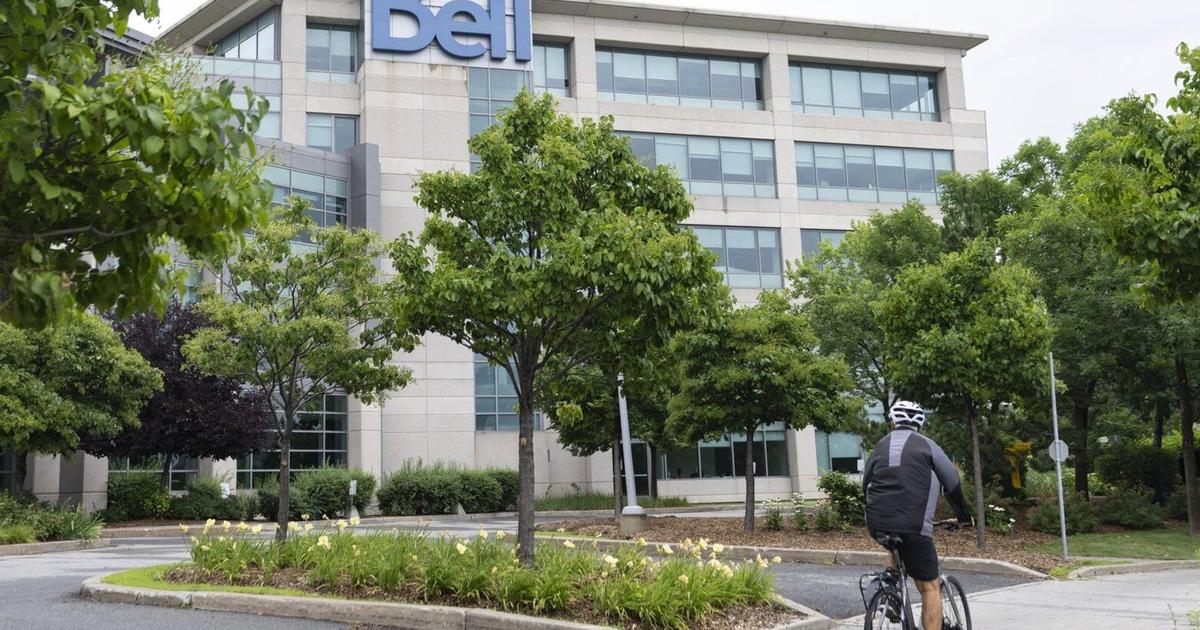TORONTO – BCE Inc. will begin offering fibre internet services in Western Canada using its rivals’ networks under rules it has long opposed, as it seeks to grow its customer base and push for more bundled subscriptions.
That was among a list of plans shared by the parent company of Bell Canada during its investor day event on Tuesday. It included a three-year growth outlook focused on fibre, wireless, AI-powered enterprise solutions and digital media.
Bell announced a number of initiatives on those fronts, such as the introduction of new tiered wireless plans, a new backup option in spring 2026 that will maintain service during power outages, the eventual elimination of TV set-top boxes, and expanded streaming bundles in certain markets.
In the near term, Bell said it will launch home internet service next month in B.C. and Alberta, where rivals Telus Corp. and Rogers Communications Inc. dominate the market.
To do so, it will resell fibre internet using Telus’ network under the CRTC’s wholesale fibre framework. The contentious rules — having been the source of disagreement between the telecoms for the past two years — allow the Big 3 to resell internet on each other’s existing fibre networks, in exchange for a fee, as long as they do so outside their core serving regions.
Blaik Kirby, BCE’s group president of consumer and small business, said Bell will resell fibre internet in the west “where necessary for the highest value customers.” He said the offering will initially be available to Bell’s mobile customers in those provinces, with special pricing for bundled packages.
“Being more competitive in the west will significantly improve customer consideration of Bell, particularly for wireless,” Kirby said in a presentation.
“With a strong focus on cross-sell and mobility and internet content bundling nationally, we expect this to translate to continued strong retail market share and overall better network penetration in the east and gains in wireless performance in the west.”
The plan marks a shift for Bell, which has argued vehemently against the wholesale framework.
Bell has previously said the policy discourages major providers from investing in their own infrastructure, and slashed $500 million in investment plans this year in response to the CRTC’s direction. In August, Industry Minister Mélanie Joly said Ottawa wouldn’t overturn the CRTC’s wholesale policy following a federal review.
“Imagine spending billions of dollars in order to generate a return, and then a regulator tells you that you have to give that asset to somebody else so they can make a return instead,” Bell president and CEO Mirko Bibic said at the time.
Bibic struck a different tone Tuesday when asked by an analyst about the company’s latest view on the regulatory environment.
“Our position on the policy was quite clear and remains quite clear, but the decision’s been made, so the job of this team here is to execute against that background,” he said.
“We continue to urge the commission to make sure that those who build networks in Canada are fully and appropriately compensated for the full cost of building those networks and maintaining them.”
Telus, the lone major telecom that supported the policy, began offering fibre internet service through Bell’s network in Ontario and Quebec close to a year ago under the wholesale regime and has said it plans to extend its offerings to the Atlantic provinces too. This past summer, Telus announced it would spend $2 billion to deliver broadband services across Ontario and Quebec over the next five years, attributing the move to the CRTC’s wholesale fibre framework.
Bibic said Tuesday that fibre “will continue to fuel our growth for years to come,” calling it the “best broadband technology available, bar none.”
He said Bell is continuing to phase out copper “in a smart and balanced way.”
That’s one of the ways BCE also hopes to find $1.5 billion in total cost savings by 2028 — around double its previous goal — through a “companywide transformation and continued focus on operational efficiencies.”
“We’ll save costs by upgrading to fibre, reselling salvaged copper and making the most of our real estate footprint,” said Bibic.
“Our systems have grown too complex over time as technologies evolved and as we’ve completed multiple acquisitions. But we’ve been simplifying to provide a smoother customer journey at lower cost. So think: one billing system, one ordering platform and a unified customer profile.”
Kirby said the company would also streamline its brand portfolio, making Bell its only option for mobile and internet bundling. It will stop selling Virgin Plus internet and TV in Ontario in January, while maintaining Virgin and Lucky Mobile as discount options for stand-alone wireless services.
The company expects revenue growth at a compound annual growth rate of two to four per cent between this year and the end of 2028. It also anticipates paying approximately $5 billion in dividends to shareholders over the next three years.
BCE’s compound annual growth rate of its adjusted earnings before interest, taxes, depreciation and amortization is expected to be two to three per cent between this year and the end of 2028.
Analyst sentiment was positive in response to BCE’s outlook, with the implied revenue growth trajectories above forecast, according to RBC’s Drew McReynolds.
“Although the focus now shifts to execution … across the many moving parts, we are encouraged by the sustained return-to-growth expectation and view the 2025-2028 outlook as achievable,” he said in a note.
Bibic also said BCE is bullish on its recent expansion of technology and artificial intelligence services.
In a series of announcements this year, Bell launched a portfolio of AI-powered enterprise solutions, including tech services brand Ateko, an AI compute project known as Bell AI Fabric, and cybersecurity brand Bell Cyber.
Bibic said Bell expects around $1.5 billion in revenue from those services over the next three years.
This report by The Canadian Press was first published Oct. 14, 2025.
Companies in this story: (TSX:BCE, TSX:T, TSX:RCI.B)



